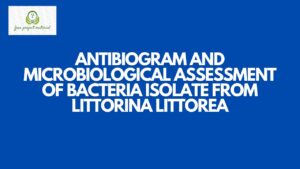ABSTRACT
The physicochemical properties of borehole water reservoir from the University of Uyo female hostel annex was done using analytical methods. The result revealed some concentration of physico-chemical properties of the water sample which include Electric conductivity 24.8±0.019 Ns/cm, pH 6.15±0.00, Temperature 26.00±0.000, TDS 12.30±0.064 mg/L, TSS 0.05±0.013 mg/L, DO 1.90±0.002 mg/L, BOD 0.84±0.004 mg/L, Alkalinity 12.30±0.164 mg/l and Acidity 6.15±0.084. mg/L. The result revealed that the water from University of Uyo female hostel annex are fit for human consumption and it is within the WHO permissible standard. Other study should be carried out on organic pollutant like pesticides, phenol and microbial activities.
TABLE OF CONTENTS
Title Page – – – – – – – – – i
Certification – – – – – – – – – ii
Dedication – – – – – – – – – iii
Acknowledgements – – – – – – – iv
Abstract – – – – – – – – – v
Table of Contents – – – – – – – – vi
CHAPTER ONE: INTRODUCTION
1.1 Background of the Study – – – – – – 1
1.2 Aim and Objective of the Study – – – – – 5
1.3 Scope and Limitation of the Study – – – – 6
1.4 Significance of the Study – – – – – – 6
1.5 Definition of Terms – – – – – – – 7
CHAPTER TWO: LITERATURE REVIEW
2.1 Borehole Water – – – – – – – 8
2.2 The Reason Borehole Water Came into Existence – – 10
2.3 Uses of Borehole Water – – – – – – 11
2.3.1 For Drinking – – – – – – – 11
2.3.2 For Washing – – – – – – – – 12
2.3.3 Cooking Processing – – – – – – 13
2.3.4 For Agricultural Use – – – – – – 15
2.4 Physiochemical Parameters of Borehole Water – – 16
2.4.1 Temperature – – – – – – – – 16
2.4.2 pH – – – – – – – – – 17
2.4.3 Electrical Conductivity – – – – – – 17
2.4.4 Taste and Odor – – – – – – – 18
2.4.5 Color – – – – – – – – – 19
2.4.6 Dissolved Oxygen Demand – – – – – 20
2.4.7 Alkalinity – – – – – – – – 20
2.4.8 Biochemical Oxygen Demand – – – – – 20
2.4.9 Total Dissolved Solid – – – – – – 21
2.4.10 Total Suspended – – – – – – – 21
2.4.11 Acidity – – – – – – – – 22
CHAPTER THREE: MATERIALS AND METHOD
3.1 Materials – – – – – – – – 23
3.1.1 Description – – – – – – – – 23
3.1.2 Sample Collection – – – – – – – 23
3.2 Physicochemical Parameter of Water Sample – – 24
3.2.1 Temperature Determination – – – – – 24
3.2.2 Determination of pH – – – – – – 24
3.2.3 Determination of Electrical Conductivity – – – 24
3.2.4 Determination of Total Suspended Solid – – – 25
3.2.5 Determination of Total Dissolved Solid – – – 25
3.2.6 Determination of Total Alkalinity – – – – 26
3.2.7 Determination of Acidity – – – – – – 26
3.2.8 Determination of Dissolved Oxygen – – – – 27
3.2.9 Determination of Biological Oxygen Demand – – 27
3.2.10 Determination of Odour – – – – – – 28
CHAPTER FOUR: RESULT AND DISCUSSION
4.1 Result – – – – – – – – – 29
4.2 Discussion – – – – – – – – 30
CHAPTER FIVE: CONCLUSION AND RECOMMENDATIONS
5.1 Conclusion – – – – – – – – 34
5.2 Recommendations – – – – – – – 34
References
CHAPTER ONE: INTRODUCTION
1.1 Background of the Study
Water is one of the abundant substance on the earth’s surface. Its’ unique properties make it the most important and abundant substance in the entire universe, it occurs as surface water in lakes, rain water and streams as well as ground water in wells, boreholes, and springs water plays a vital role in human life. It is extremely essential for healthy living and must be made available for consumer in sufficient quality and at high standard (WHO, 2010).
Water is a key component in determining the quality of our lives. Although water covers about 70% of the earth’s surface, only 0.3% of it can be used by human. Among the various sources of water, ground water is the largest reservoir of drinking water, it is that water reservoir found in the saturated part of the ground underneath the land surface. Water seep into the ground and move downward due to gravity through the pore spaces found between soil particles and crack in rock. The water eventually reaches a depth where the soil and rock are saturated (Samie et al., 2011). Groundwater is an important source of water supply with a number of advantages; it is commonly free from pathogenic organism due to infiltration and requires little or not treatment; turbidity and colour are generally absent and its chemical composition is almost stationary (Knalid et al., 2018) despite this advantages, ground water is susceptible to pollution as a result of reaction of human activities.
Ground water is ultimately most suitable fresh water resource with a balanced concentration of salt for human consumption (Idoko, 2010). Ground water account for about 98% of world. It provide a reasonable constant supply, which is not likely to dry up over natural condition and usually of high quality. Also water is one of the basic needs for life and survival of human beings. According to (Mac Donald et al. 2005) about 1.1 billion people lack access to an improved drinking water supply.
In Nigeria alone about 52% of the population lack access to safe drinking water (Oluyemi et al., 2010). About 8.3 million residents in Lagos (62.6%) the state population and some individuals and industries lack access to pipe borne water, they depends on ground water (shallow, hand dug wells and boreholes) for their domestic and industrial use (Majolagbe et al., 2011). However, mineral enrichment from underlying rocks can change the chemistry of the groundwater, making it unsuit, the physico-chemical quality may have adverse health effect causing avoidable economic and human losses, polluted water is potentially dangerous to health because of possible outbreak of typical dysentery or cholera epidermis and other water-borne disease.
Water is essential for the existence of humans and all living things and hence, satisfactory (adequate, safe and accessible). Supply must be available to all. Water used for domestic purpose must be clean and not contain any microorganism, parasites and other substances which can pose danger to human health ( Alverez-Bastida et al., 2018).
Borehole water is the ground water available for an aquifer obtained by installing a pump to draw the water to the consumer. The contaminated surface water with pathogenic infiltrates into the soil and become groundwater which would be filtered by the soil profile before reaching the depth of the aquifer. An aquifer is saturated, water stratum that is capable of holding, transmitting and yielding sufficient water to underground well. The major problems of boreholes is the chemical content of the ground water, which must be analyzed to ascertain if these dissolved products are within the permissible limits for consumption purpose by authorities such as world health organization (WHO 2006). Safe water supply and sufficient sanitation to secure health are among the essential human right. However, many people do not have access to safe drinking water and risk to water bone disease is a critical public health problem in many developing countries (Khalid et al 2018). Water quality varies for different purposes in everyday activities (Boulding and Rusell, 1995). Water quality standards are established to determine whether water of a certain quality is suitable for its intended use.
1.2 Aim and Objectives of the Study
1.2.1 Aim
The aim of this research work is to determine the physico-chemical properties of borehole water reservoir from University of Uyo female hostel annex Akwa Ibom State, Nigeria.
1.2.2 Objectives
The objective of this project research is to:
- Determine the physico-chemical parameters of borehole water reservoir from female campus in University of Uyo annex, Akwa Ibom State, Nigeria.
- To compare the result and know if it has meet the world health organization (WHO) standard.
- To make useful recommendation and suggestion for further studies based on the result obtained from this study.
1.3 Scope and Limitation of the Study
The Scope of this study is on the physicochemical parameters of the borehole water obtained from the University of Uyo, female hostel annex Akwa Ibom State, Nigeria and this work is limited due to time and lack of adequate facilities and financial constraints.
1.4 Significance of the Study
(a) This study will help to bring to the awareness of the management, the quality status of the borehole water use at the University of Uyo female hostel annex, which will serve as a database for decision making on the need for improving the quality of the water supply in the institution.
(b) This study will create awareness and source of information to the student of University of Uyo and the occupant of the female hostel in particular to always check the portability of the borehole water supply in the hostel.
(c) This study will also serve as a reference material to future researcher and student in this field.
1.5 Definition of Related Terms
Physico-chemical: This is derived from the two words: physico (from physical) then chemical. The term physico-chemical simply means physical and chemical properties.
Borehole Water: A borehole is a narrow shaft bored in the ground (either vertically or horizontally) that tap into naturally occurring underground water that is obtained directly from the universal aquifer throughout a pump (a high efficient pump).
Water: Water is an odourless, colourless, transparent liquid that forms the seas, lakes, rivers and rain. It is also the basis of the fluids of every plant, animal, human or every living organisms or things.


